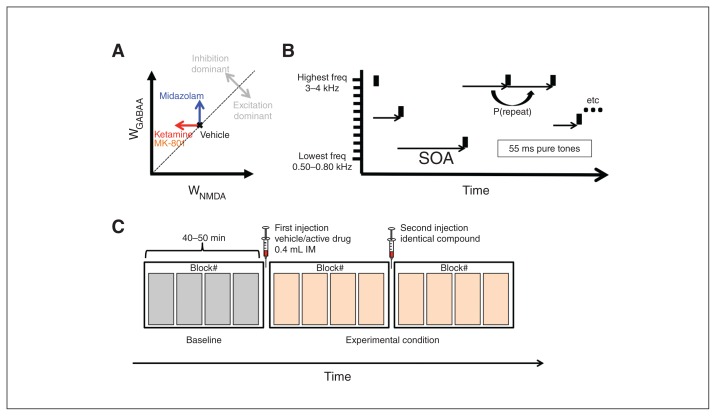Fig. 1.
(A) Two-dimensional reduction of the high-dimensional space that determines excitatory/inhibitory (E/I) balance of a hypothetical neural system. Excitation is represented on the X axis as the strength of glutamatergic neurotransmission at N-methyl-d-aspartate receptors (WNMDA). Inhibition is represented on the Y axis as the strength of γ-aminobutyric acid A (GABAA)-ergic synapses (WGABAA). Points above [below] the diagonal represent states of relative inhibition [excitation] dominance. Experiments 1 and 2 decreased WNMDA (red arrow), whereas experiment 3 increased WGABAA. Both types of intervention shift the system into a state of relative inhibition dominance. (B) Auditory paradigm. Animals passively listened to tones of 11 different auditory frequencies presented at random times. All tones were 55 ms long and were presented at a sound pressure level (SPL) of 80 dB. Stimulus-onset asynchrony (SOA) ranged between 0.25 and 32 seconds and followed a boxcar distribution in log2-space. (C) Tone presentations were structured into blocks, each lasting between 9 and 12 minutes. The first 4 blocks measured baseline response. The following 2 groups of 4 blocks were preceded by an intramuscular (IM) injection of either vehicle or active drug.

